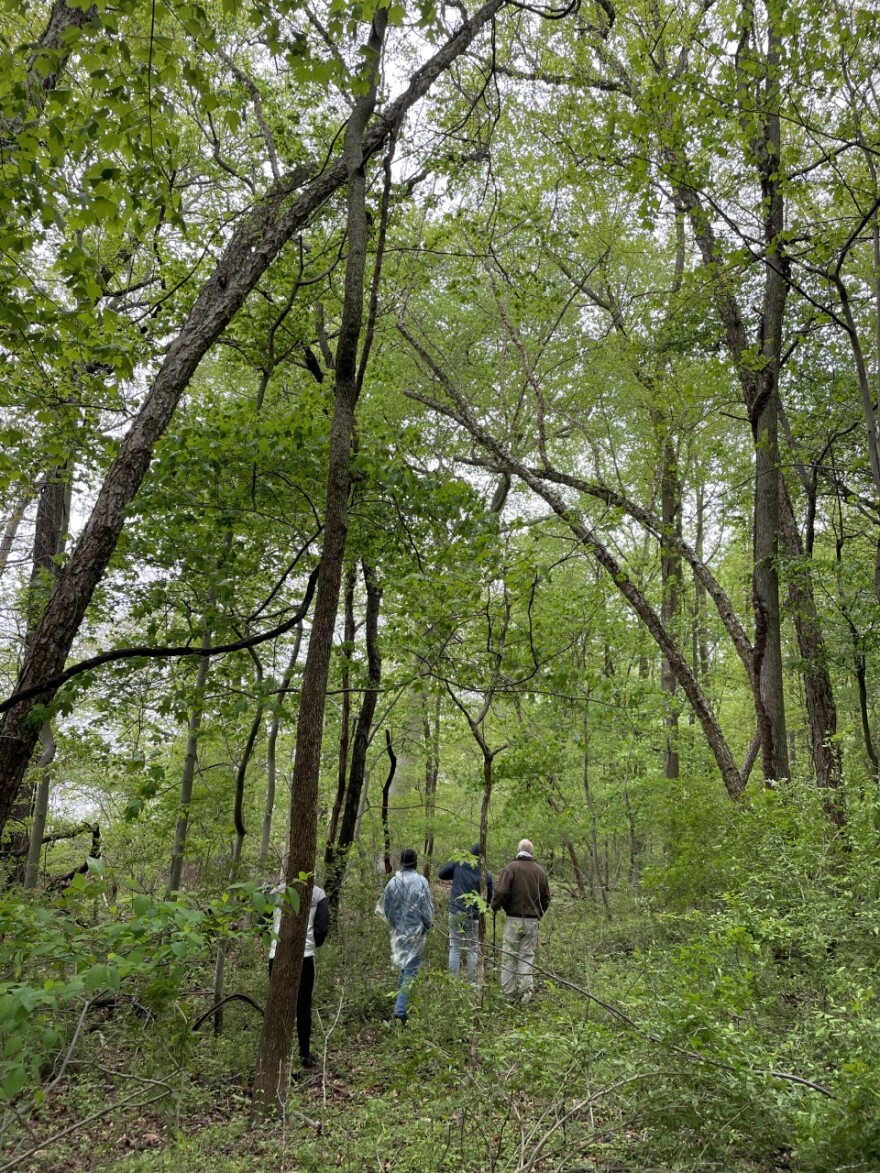During the cold and rainy first full weekend of May, some history enthusiasts from Delaware and Connecticut bonded over a common mission: to mark the importance of James L. Smith in American History.
James L. Smith was well-known in Norwich, Connecticut. He built a business and ministered there, and eastern Connecticut is his final resting place.
Smith told the story in his 1881 autobiography about his life years earlier on a plantation in the Northern Neck of Virginia, how he fled with two other men, got separated from them in Maryland, then once in New Castle was able to find them and continue on to Philadelphia.
It was a perilous journey over land and water - one that a group of people from Norwich, Connecticut was hoping to partially travel.

"He's kind of been in the background, but this journey we're going on is pushing him into the foreground," Castle Church Pastor Adam Bowles said.
According to Bowles, the idea of retracing part of that journey developed out of a discussion at a church picnic. Castle Church, which has a race and justice ministry, draws inspiration from Smith's story and shares that theme of resilience.
"It's quite the honor to now go on this journey, to retrace his steps," Bowles said. "His autobiography is such a treasure for the city of Norwich, and it perfectly captures the theme of resilience."
The delegation from Connecticut turned to New Castle- based historians for guidance. That guidance would come from Jim Meek, a history enthusiast who at one point studied map-making and retraced the path of the old Frenchtown-to-New Castle Railroad.
Meek trekked through at-times thick brush and met with several homeowners not far from Lewis Shore Road, the old railbed and present-day Route 40.
"A mile-and-a-half of the area up around New Castle is accessible. Down near Frenchtown, a couple of miles are accessible, but the other stuff is not. It's just railroad or impenetrable," Meek said.
The first stop for Bowles and his colleagues was Heathsville, Virginia. Weather conditions curtailed their plans for a full sail up the Chesapeake Bay. They made their way into Cecil County, Maryland and - like Smith may have done - they hacked their way through thick brush along the route.

They also had the benefit of something Smith did not have: paved portions to walk on, especially near New Castle.
"It's here where he almost quits, he almost gives up," Bowles said. "His two friends move on. James Lindsey Smith was injured as a child on the plantation, so he can't keep up with them. He has this moment where he's saying 'I'm just going to give myself up to the slave catchers.' But then a voice tells him 'no, keep going - if you're going to be caught, let it be caught on the road to freedom.'"
As Smith wrote in his autobiography:
When I had lost sight of them I sat down by the roadside and wept, prayed, and wished myself back where I first started. I thought it was all over with me forever; I thought one while I would turn back as far as Frenchtown, and give myself up to be captured; then I thought that would not do; a voice spoke to me, "not to make a fool of myself, you have got so far from home, (about two hundred and fifty miles), keep on towards freedom, and if you are taken, let it be heading towards freedom." I then took fresh courage and pressed my way onward towards the north with anxious heart.“
Smith, however, did not speak kindly about New Castle in his autobiography:
"How we ever passed through New Castle as we did, without being detected, is more than I can tell, for it was one of the worst slave towns in the country, and the law was such that no steamboat, or anything else, could take a colored person to Philadelphia without first proving his or her freedom. What makes it so astonishing to me is, that we walked aboard right in sight of every body, and no one spoke a word to us. We went to the captain's office and bought our tickets, without a word being said to us."
Back in Connecticut now, Bowles said Castle Church will proceed with Jubilee Park, converting an abandoned courtyard into a public space with a large mural of James L. Smith.
What does this mission mean for Delaware?
Meek said it has demonstrated that not much is known about the underground railroad in New Castle - certainly much less than what we know about Wilmington.
"I think it's just fascinating. I think it's a great educational opportunity and something useful for learning more about the role of New Castle in all of this."
For more information about Castle Church's Norwich Jubilee Project, vist their Facebook page,
An electronic edition of James L. Smith's autobiography can be found online.
Jim Meek features New Castle history at his website.




